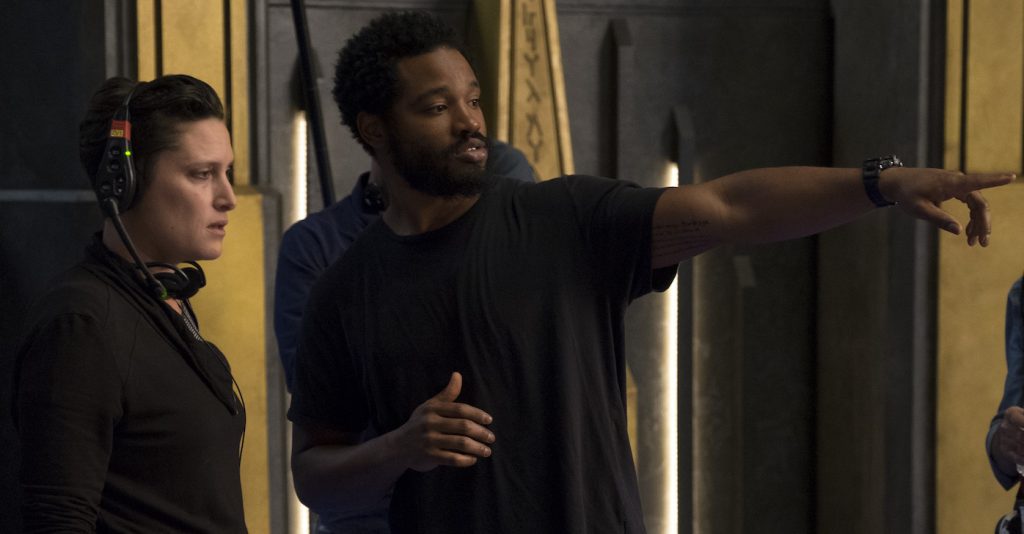Oscar Watch: Black Panther Cinematographer Rachel Morrison on how to Make an Intimate Epic
When Oscar-nominated cinematographer Rachel Morrison (the first woman ever nominated in the category for her work on Mudbound) started working on Black Panther, she had an uncanny feeling; this massive, ultimately groundbreaking Marvel mega-film felt much more like the indies she’s worked on in the past. Black Panther marked her second collaboration with writer/director Ryan Coogler (she lensed his breakout first film, Fruitvale Station), and although Marvel was pouring massive resources into this epic, everything about the production felt intimate.
“This was a film about family, about legacy, and some of it almost felt like we were shooting a single camera movie,” Morrison says. “Meeting with Ryan beforehand, he was really focused on intimacy, and it felt like the most expensive indie ever filmed.”
We all know that Black Panther would go on to become a cultural and commercial juggernaut, but at the time of production, that was far from a guarantee. Every step of the way, Morrison says that the team focused on the relationships between T’Challa (Chadwick Boseman) and his fellow Wakandans, with special attention paid to make sure this massive, action-packed superhero movie never lost sight of the relationships at the core of the story.
“The questions we were asking were; what does it mean to follow in your father’s footsteps and take on the role of king, and how do you protect your country?” Morrison says. “There is also the question of what he owes Wakanda versus what he owes the world? Do you keep your borders closed, or do you open them up and help so many others?”
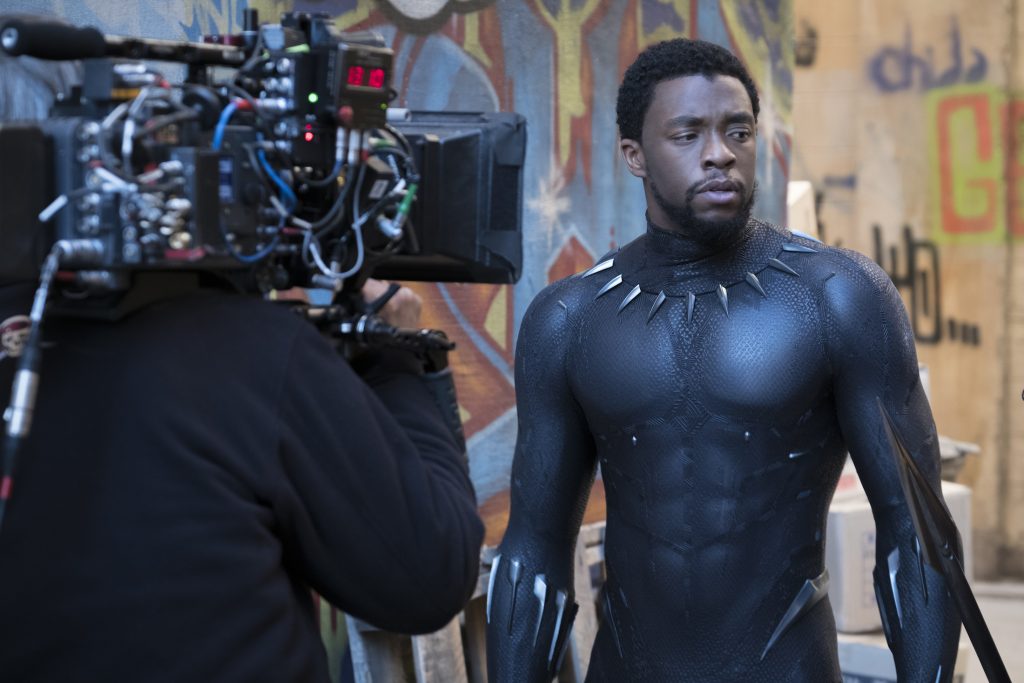
In practical terms, Morrison had the unusual experience of lensing an epic on a personal scale. This meant making sure her camera was plunging the viewer into the many highly charged relationships that were unfolding, unraveling and, ultimately, reemerging over the course of the film. In a one camera film, it’s much easier to create that sense of intimacy than it is in a huge movie like this, yet Morrison found a way.
“We were careful about the eye lines,” Morrison says. “It’s not a coincidence that when you’re trying to create intimacy between two characters talking to each other, and you want the audience to feel like they’re in that conversation, you want the eye line as close as possible,” she says. “But the more cameras you move into the mix, the more you’re forcing one of the eye lines wider, and you’re often compromising both eye lines. Sometimes it’s worth it, and sometimes directors want more cameras because on a stunt, for example, the more likely it is that somebody is going to get that magical moment, but you’re sacrificing other things. In our case, we decided it was more important to us to have the intimacy between the characters.”
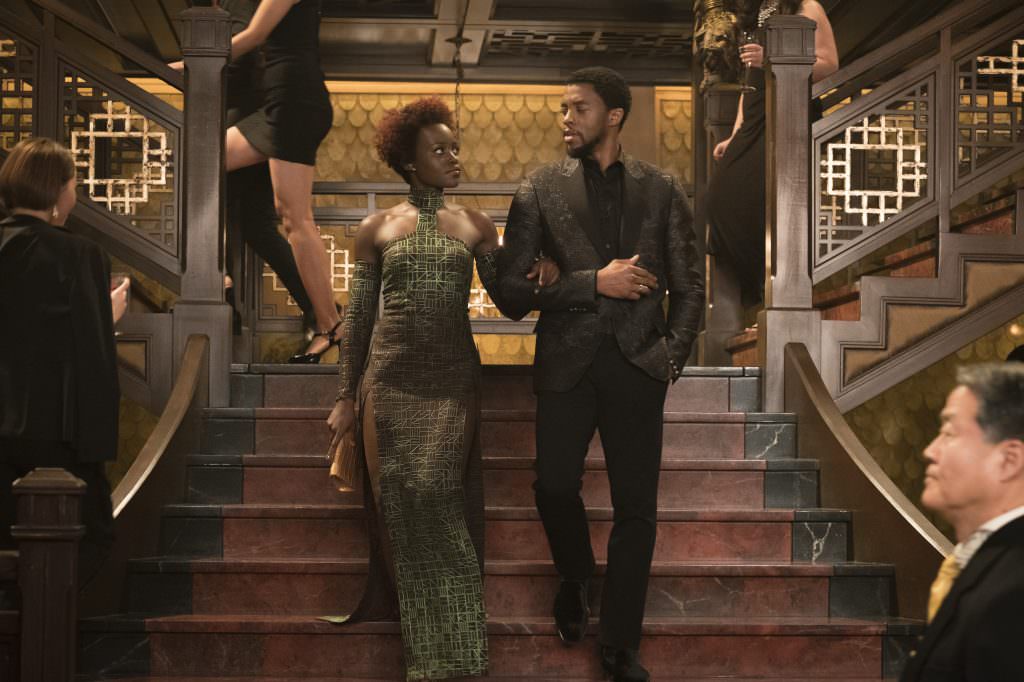
Black Panther hardly lacks for action, of course. The palpable thing about this film is that the big set pieces serve to enhance the relational drama happening all around T’Challa. This is accomplished, Morrison explains, by always making sure the action is coming from a very specific point of view.
“Both Ryan and I care about subjectivity,” Morrison says. “Even with the action scenes, it was important to put the audience in the driver’s seat, so we’re not watching from across the road on a long lens. I think an approach some directors take more often than not is to film action with a long lens zoom and use 20 cameras.”
Morrison was committed to putting the viewer in the driver’s seat literally. In a thrilling car chase scene set in South Korea, T’Challa, Nakia (Lupita Nyong’o) and Okoye (Danai Gurira) zoom through the city streets of Busan chasing Ulysses Klaue (Andy Serkis). Their car is being driven remotely by T’Challa’s brilliant sister Shuri (Letitia Wright), and Morrison made sure that the viewer was right in the car with all of them.
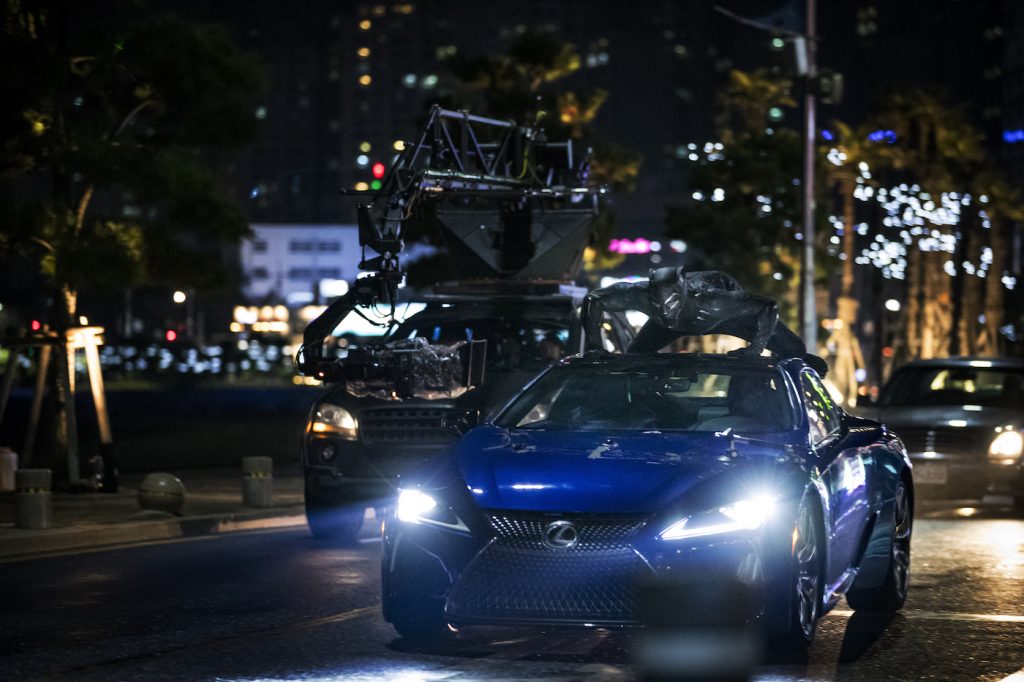
“We looked at movies like Bullit, The French Connection, and Drive to see what made them work so much better than many others,” Morrison says. “A lot of it was putting the camera in the car with the driver so the audience can experience what the driver is and see what they’re seeing. We didn’t want to put cameras where none of our characters were. The viewer isn’t some passerby that’s two miles away on a long lens watching a car fly by—they’re in the car with Nikia.”
For the fight scenes, Morrison says that Coogler had learned a lot filming his 2015 hit Creed.
“It’s not a coincidence that it’s hand to hand to combat, because Ryan knew that was the most intimate version of a fight,” she says. “He learned that with Creed. When you shoot with a gun, you’re a mile away, but when you’re fighting with your hands, the audience is experiencing the action in a very visceral way. You’re not further away than maybe a spears distance.”
There are several really epic hand-to-hand combat scenes in the film. Before the car chase through Busan, there is a truly spectacular brawl in a casino. Morrison says that at one point they were hoping to try to pull this off in a single take, but ultimately, due to the number of combatants, they decided against it.
“We realized it wasn’t going to work because you had to understand where people were,” Morrison says. “It was important to understand the geography of the space and who the villains were, so we were forced into a few more cuts. With that said, Ryan’s sensibility is to linger as much as you can, and it still goes to the idea of experiential filmmaking, the longer you can stay in a moment, it allows the audience feel a part of something instead of watching something. In the end, it’s maybe six or seven cuts, but you get a sense of the space and the relationship between the people are brawling.”
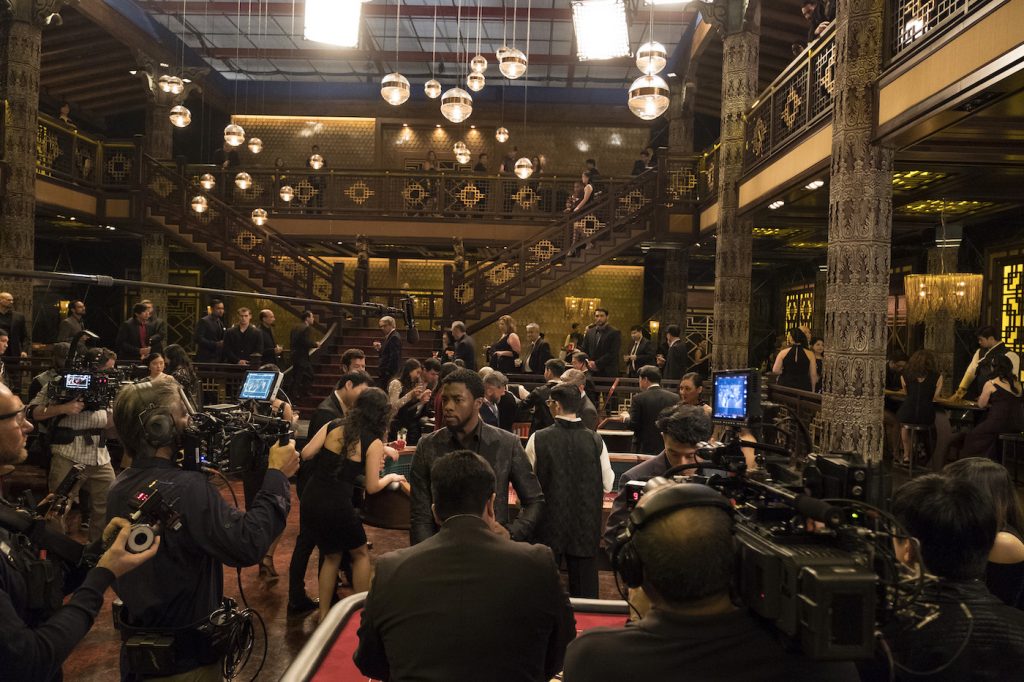
Morrison says that the casino fight scene gave her an opportunity she’d never had before; to design a space around her cameras.
“How we executed this scene was interesting—we were able to design the set around some of our needs for the camera, which was a first for me,” she says. “We had pinpoints for the action, for the camera, and working with production designer Hannah [Beachler], stunt coordinator [Jonathan Eusebio] and fight choreographer [Jon Valera], we were able to conceive of a space to allow us to do the necessary camera work.”
The other really intense fight sequences take place at Warrior Falls, where T’Challa bests an early challenger (Winston Duke’s M’Baku) but suffers a brutal, nearly fatal defeat at the hands of Killmonger (Michael B. Jordan).
“So what was interesting with Warrior Falls was I got to do a little bit of work with a V-Cam [virtual camera] in prep. They did a mockup of what the other side of the falls would look like, and I was able to spend some time understanding that and taking still frames so that I could show the operators on the day of the shoot,” Morrison says. “That waterfall was a massive set build, and we were in the water with four to five tiers of stadium seating [which were turned into cliffs with CGI]. The set was huge, but it’s really what was across the falls that was CG, and that was a blue screen.”
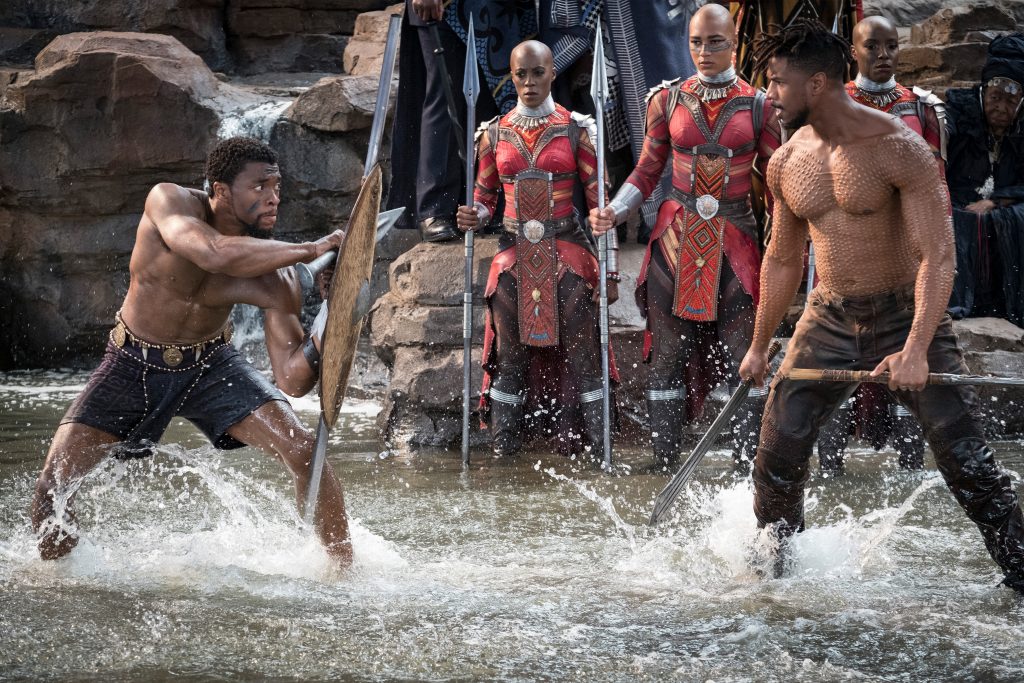
“I had to remind the operators not to shy away from pointing their cameras there,” she says. “There’s a tendency when you have things in front of you, as opposed to a blue screen, to lean into what you can actually see, and often it’s the right call because it’s the most photorealistic, but in this case I’d seen how beautiful the falls were going to be.”
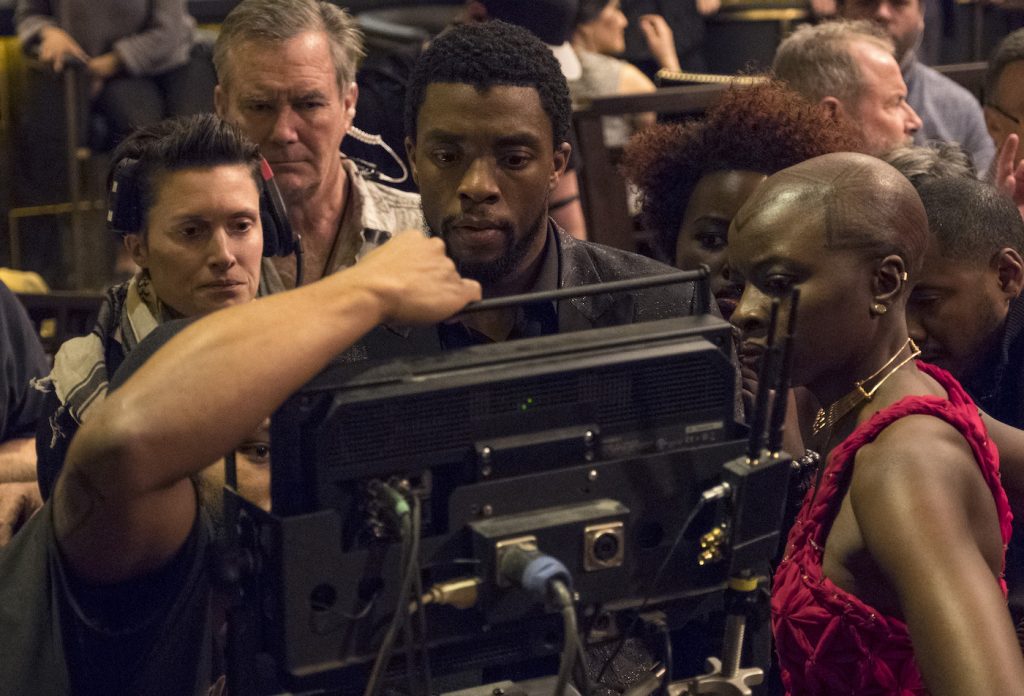
Morrison worked with visual effects supervisor Jeff Bauman to make sure the falls would look right, and trusting him, she urged her camera operators to trust her.
“Knowing the magic of what the blue screen was going to be, I had to keep guiding the operators to shoot the blue screen, as beautiful as what they were seeing in real life was, what we would eventually see in the distance would be as evocative.”
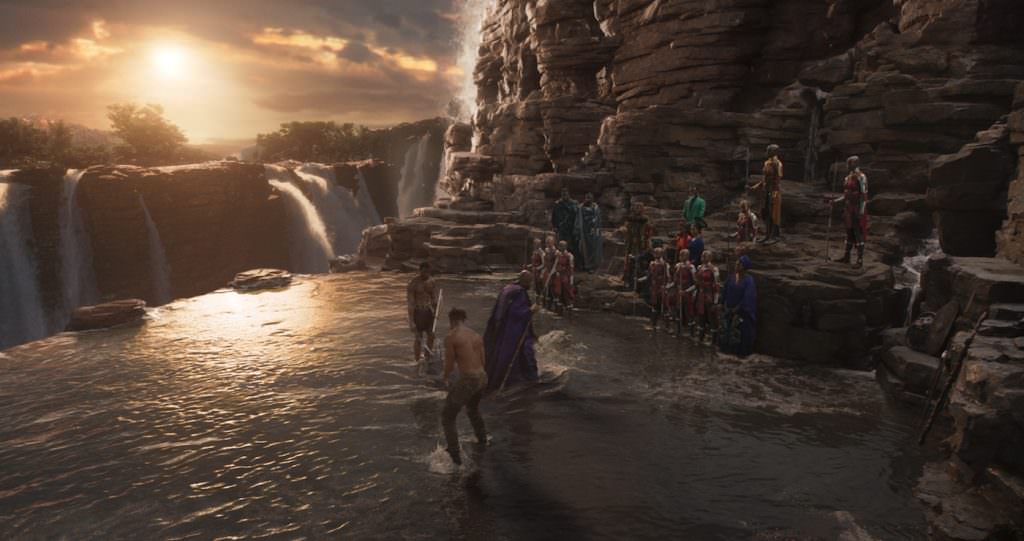
Perhaps even more so than the action scenes, it was capturing Wakanda itself that represented Morrison’s most crucial job. There has perhaps never been a superhero film where the setting was as novel or as important. Morrison accomplished capturing the majesty of the fictional African nation by matching it, so to speak, with Coogler’s own experience in pre-production.
“I can only imagine in some ways the way we shot Wakanda mirrors Ryan’s experience the first time seeing Africa, which he did prepping this film,” she says. “The first time you see Wakanda is from the air. You start from this macro, aerial point of view, and then you hone in on the specificity once you’re on the ground. You get to see and understand its details, the flora and fauna, and the closer you get, the more intimate it becomes,” she says.
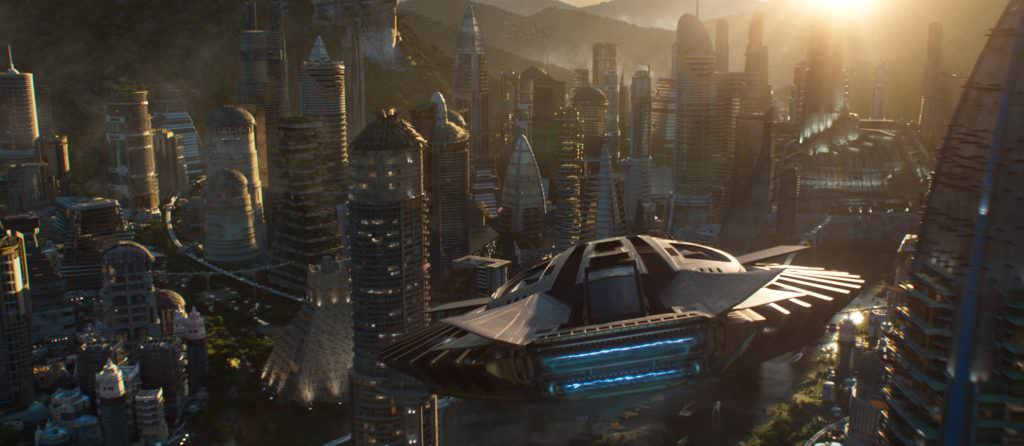
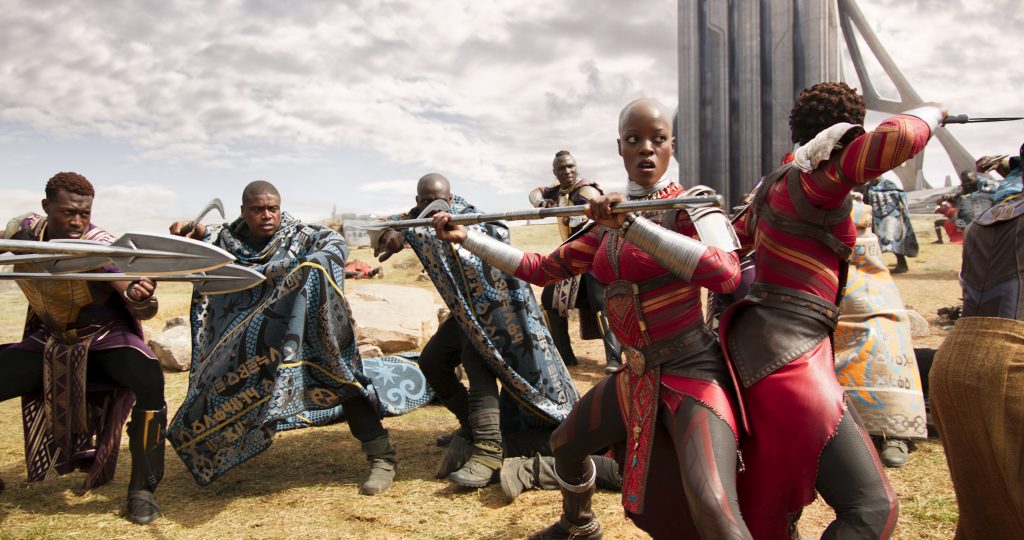
Ph: Film Frame. ©Marvel Studios 2018
“When looking at Wakanda from an aerial POV, at the shots of the busy beach or markets, it feels almost like an ethnological study, but also incredibly beautiful, and I think that was intended at least on a subconscious level. Obviously, aerials can be so stunning, the birds flying, the horses galloping, the waterfalls, and then once you get on the ground you get the beauty of the clothing and the beadwork and the faces. You start big in order to understand the smaller minutiae.”
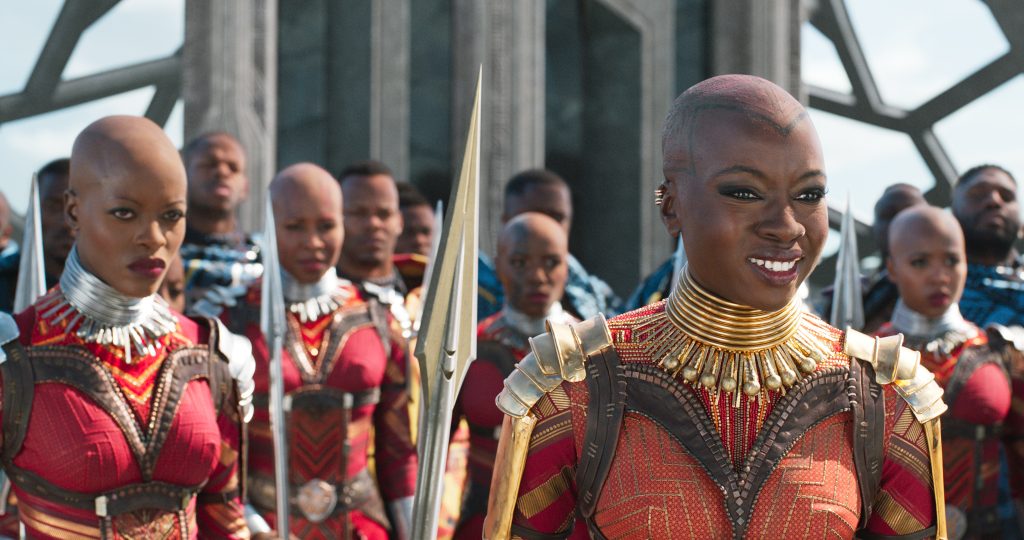
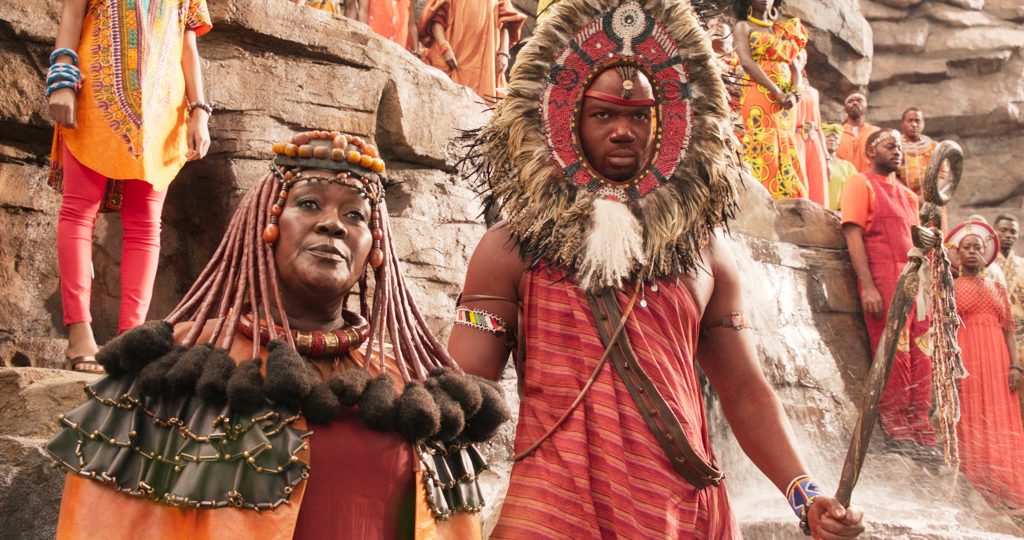
Featured image: L to R: Director Ryan Coogler on set with Cinematographer Rachel Morrison. Ph: Matt Kennedy. ©Marvel Studios 2018



